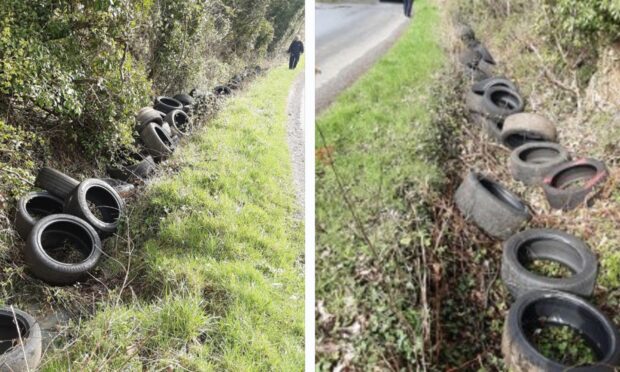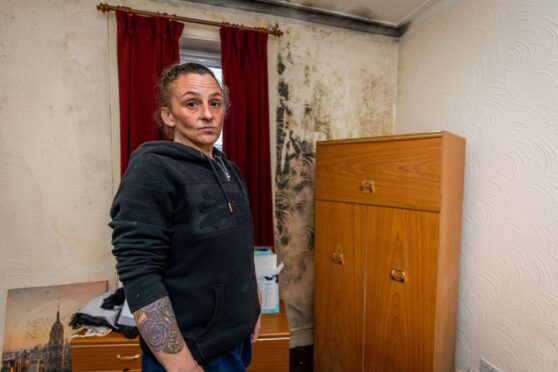Every school in Fife is to be “poverty proofed” in a bid to ease pressure on hard-pressed children and families.
Primary and secondary schools across the kingdom will be asked to audit school costs every three years and take steps to minimise them as part of new measures aimed at bringing to down the cost of the school day.
The work comes amid ongoing fears financial barriers are affecting participation and experiences at school for many children in Fife, particularly those who come from low income households.
To that end, a three-year plan has been drawn up designed to help schools share best practice, while every school will need to have a “poverty proofing” statement in their formal curriculum rationale.
All schools will also have a designated Poverty Matters trainer, which comes on the back of the training of 41 people – from head teachers to pupil support assistants – to help them fully consider the impact of poverty on children and how to mitigate its effects within school settings.
Sarah Else, education manager, said: “The cost of the school day can be significant for many families, especially for low income families.
“As family finances come under increasing pressure, taking action to minimise costs and maximise opportunities for pupils from low income households could yield enormous dividends for our children and young people.
“Many of the established customs and practices within schools bring with them additional costs to pupils that put additional pressures on them and their families.
“These customs are, overall, undertaken with the best intentions of school staff and are clearly designed to provide young people with a range of experiences that will enhance their learning and their personal development.”
Fife has already been pressing ahead with work to lower the cost of the school day, borne out by the recent decision to increase the region’s school uniform grant to £100.
But the new plan highlights a range of areas where more can be done to help cash-strapped families and carers.
A list of top tips has been developed and will be added to over the coming months, highlighting ways in which schools and parents can contribute.
For example, schools are being encouraged to have uniform swap shops and clothing banks, gift uniforms to certain age groups, discourage ‘labels’ and dress down days, and provide more support for parents and carers when applying for clothing grants.
However, the plan does not just touch on kitting kids out for school, as travelling to school, school trips, eating at school, school clubs, homework and fun events are among the other areas education chiefs are keen for schools to re-examine with poverty in mind.
A report to Fife’s education and children’s services committee confirmed that 90% of schools will be expected to have completed an audit of costs and taken steps to reduce costs by next year, while the same target has been set in relation to holding pupil and parent workshops and staff training specifically on the cost of the school day.
Some of the top tips for schools developed so far…
Learning at Home:
Is homework designed so it doesn’t require internet/ICT/lots of resources?
Could resources be sent home with homework?
Homework clubs available in school.
Share advice with parents on supporting homework.
Promote ideas for using the local community i.e library, cheap/free swimming in holidays, local parks.
Uniform:
Have a uniform swap shop/clothing bank.
Poverty Proof your uniform – does it have to be badged? Is it easily available from ‘cheaper’ high street stores?
Gifting to P1s, P7s, S1 ties.
Support for Parents/Carers to complete School Clothing Grant application.
Discourage ‘labels’ and dress down days.
Regular communication to families about everything above. –
Leavers Hoodies – could these be gifted or cost reduced?
Learning at School:
All learning resources provided by school.
Subsidise curricular costs where possible in Secondary.
Consider having a ‘swapshop’ of books/textbooks/revision books.
Travel to School:
Walking Bus.
Travel costs on trips subsidised.
Any event representing the school will have no costs.
Find out and share info on grants/funding available.
Rural areas – consider the cost of parents getting to and from events. Could anything be held in local communities?
School Clubs:
Free clubs offered.
Subsidised places available where clubs have a cost.
Free taster sessions.
Monitor participation in clubs so that places can be targeted.
Offer lunchtime clubs.
Fun Events:
Monitor amount of events planned across each school year and minimise those that cost.
Share Cost of the School Day information with Parent Council and Parent Groups.
Have events as donations optional rather than having compulsory set charges.
Think carefully about non-uniform days/dress up days.
School photographs – consider time of the year, is there a way to minimise the cost?
Sponsorship from partners and local businesses
One charge per family.
Eating at School:
Support families to apply for free school meals.
Have food available in schools – breakfast clubs, toast, fruit.
Consider systems for paying for meals – is it stigmatising?
Have sessions in school to support families to access IPay.
School Trips:
Ensure families have plenty notice for trips that incur a charge.
Facilitate payment schemes/paying in instalments/savings scheme.
Subsidise costs where possible/PEF funding for targeted families.
Look for grants/funds that you can apply for.
Set a maximum amount for any trip. What about families with more than one child?
Send letters about trips with costs in an envelope – this means the child can’t see and decide they can’t afford it before it reaches the parent.
Consider the justification and planned learning for the trips – can it be done elsewhere/less cost?
Audit trips offered by school across school year, cohorts and year on year.










